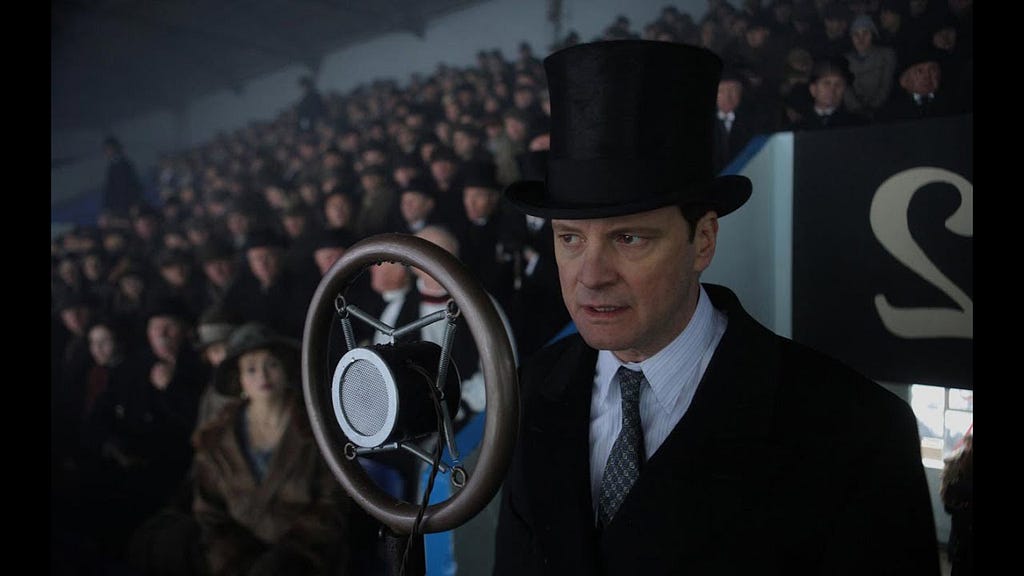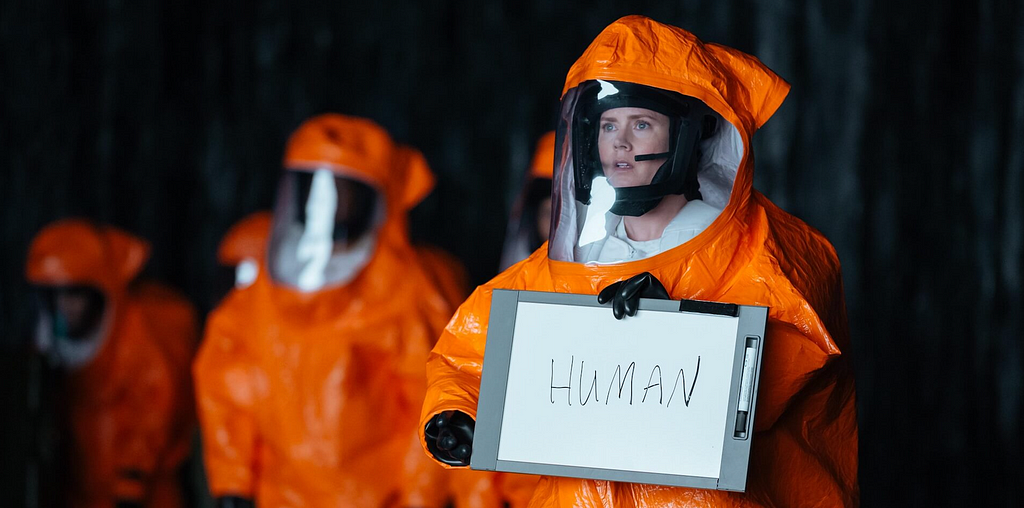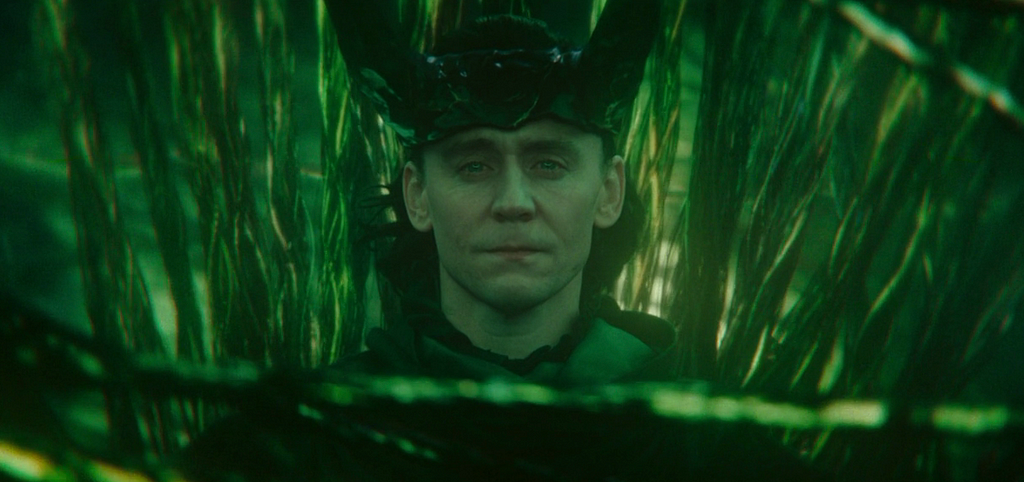The secret is hiding in plain sight.

Can we actually learn to become intuitive storytellers?
In academic conversations, we often avoid discussing something as abstract as “intuition” or “instincts” because it inevitably leads to questions about whether talent can be acquired or if it’s something we’re born with. However, having the right storytelling instincts simply means having a profound understanding of the cinematic language, possessing a vast arsenal of tricks and tools, and intuitively knowing when and how to use them. And once we unpack what cinematic language really means, it becomes clear that developing those other qualities is a quite straightforward process.
As with many terms in screenwriting, “cinematic language” is one of those commonly used phrases that we assume we understand but can’t quite define. However, it‘s important to examine it closer because it’s a rather literal term. Just as spoken languages utilize words, symbols, and syntax to express meaning, cinema speaks to us the exact same way through its own unique set of codes; shots, sequences, edits, etc… No matter if we’re consuming or creating cinema, we’re speaking its language.

Today, as we’re constantly surrounded by content and the basics of cinematic language are deeply ingrained in almost all of us, it’s hard to imagine how simply following the plot of a movie could be challenging to anyone. But understanding the story that a modern movie tries to communicate is not trivial at all. Just think of the stark difference between our experience of reality vs. how we experience stories on the screen. The fact that we can easily understand and translate movies into our own frame of reality to create an immersive experience for ourselves is incredible. And that ability comes from the fact that cinematic language has been developed and shaped by our collective subconscious through more than a century of cinema and thousands of years of storytelling. This language works so well by now that even abstract concepts like the passage of time can be conveyed simply by the way two images are juxtaposed.
“You’re seeing it all in your mind’s eye, you’re inferring it. And this is the fourth aspect of cinema that’s so special. That inference. The image in the mind’s eye… For me it’s where the obsession began. It’s what keeps me going, it never fails to excite me. Because you take one shot, you put it together with another shot, and you experience a third image in your mind’s eye that doesn’t really exist in those two other images… And that has been called, appropriately, I believe, film language.” — Martin Scorsese
Cinematic language has evolved in a similar manner to spoken languages. Initially, the first human languages were quite simple, consisting of a limited range of sounds and gestures. But over time, these languages became more complex, acquiring grammar and syntax. And throughout history, people have continuously contributed to and shaped these languages. For example, William Shakespeare is credited with inventing over 1,700 words that are still used in English today. Words such as “uncomfortable,” “fashionable,” “manager,” and “cold-blooded” all originated from him. His contemporaries also took notice and followed suit, often saying things like, “…what did Willy say again? Shit, that’s good…”

Now, think of the history of cinema. In 1896, Georges Méliès shot a simple sequence of a train hurtling towards the camera. When audiences first witnessed it, they were terrified, thinking that the train was about to crash through the screen and kill them. It was such a new experience that they couldn’t even comprehend that the scene they were watching was not real life. Imagine how that same audience would react to watching a movie from today. They would probably be incredibly confused, not just by the cinematic work and the visual effects, but also by how stories are presented. If you have never read a book or seen a movie before, a modern film would be drastically different from the way you have experienced stories before, that it would be nothing but a confusing, chaotic mess to you. But for modern audiences, understanding a complex movie is as easy and natural as breathing.
What happened between then and now is over a hundred years of collective development, conditioning, and understanding of how and why things happen on the screen. In 1902, a silent movie called “Life of an American Fireman” was the first motion picture to use parallel action. Today, this technique is widely considered one of the most effective tools for increasing tension. Just think of the sequences in “The Dark Knight” when the Joker escapes while Batman saves Dent. My bet is that you remember exactly how it held you to your seat.

But understanding that two events in an intercut are happening parallel to each other is not a default setting. What’s happening on the screen should not inherently suggest it at all. On a technical level, we basically split up two scenes and jump back and forth between them. The scenes themselves still follow each other in a linear order. A literal translation of how we experience parallel events would be a split screen, like in 24. But knowing that an intercut can express the same thing comes from the Shakespeares of cinema, who continuously experimented and introduced new techniques, constantly expanding the language of cinema that we all share. Or the way Scorsese said:
“There are certain tools that you use and those tools become part of a vocabulary. That’s just as valid as a vocabulary used for literature. You need to know how ideas and emotions are expressed through a visual form and they still have the same grammar. And the grammar panning from left to right. Tracking in or out. Booming up and down, intercutting a certain way. The use of a close-up as opposed to a medium shot. What is a medium shot, what is a long shot. All these sort of things, and how you use all these elements [ . . . ] make an emotional and psychological point to an audience.”
I recently had a great example of how this vocabulary and the cinematic language works in action. I watched Oppenheimer with a friend who usually only watches a handful of Netflix movies each year. To my surprise, he was completely lost within the first hour of the film. While Nolan did present a complex story, I found it easy to follow and very clear, so I wondered, what confused him? He looked at me a bit embarrassed and said it was the black and white timeline, as it made him think that the events of those sequences happened prior to the color ones…
And in that conversation, the true meaning of cinematic language became evident. For me and most modern audiences, a differently shot timeline can convey various meanings and it’s part of the puzzle to decipher the filmmakers’ intent with it. It can be a simple temporal distinction like in Better Call Saul, a chronological timeline contrasting the reversed order in Memento, or in the case of Oppenheimer, it’s about objective and subjective points of view. However, for my friend, black and white simply symbolized “old”. Her cinematic vocabulary was a bit outdated.

So, if cinematic language is an actual language, then as artists it’s something we need to master and become fluent in. Trying to become a screenwriter without it is like trying to become a poet in a language we don’t speak. So the question we need to ask ourselves:
What’s the best way to master a language?
It’s not through formal education, for sure. If you try to learn a language by solely studying its basic rules and grammar, your understanding of it will be limited and rigid. You will feel lost when it comes to different dialects or slang, and if your goal is to become a poet in that language, no amount of Duolingo will help you reach that level of mastery.
To truly master a language, you must immerse yourself in it, replicating the way we naturally acquire our first language. When it comes to spoken languages, the best method is to move to a native-speaking environment and absorb the language in its most organic form. This facilitates a deeper understanding of not only vocabulary and grammar, but also intonation, accent, colloquial expressions, cultural nuances, idioms, and gestures — the whole package. It is amazing how fast our brains can pick up and absorb a language when we are exposed to it like that. Our vocabulary becomes vast, and our use of the language becomes instinctive and fluent.
The same technique applies to cinematic language as well. The key to mastering it does not lie in another online course or the newest, updated edition of Save the Cat. You simply have to immerse yourself in movies. Watch as many as possible. Watch them more than once. Don’t study them, just absorb them. Embrace both good movies and bad movies, and everything in between. (You’ll probably learn more from the bad ones.) Be exposed to movies all the time and understand that consuming them is not laziness, but an essential step in becoming a great screenwriter.

Despite the fact that we all speak cinematic language to some capacity, our proficiency varies wildly. Let’s stick with linguistic terms. We typically categorize language proficiency into three levels: A (beginner), B (intermediate), and C (fluent). In terms of cinema, level A is acquired at an early age through casual movie watching. Your favorite movie is Now You Can See Me 2, and that’s perfectly fine. By the time you reach level B, you‘ve gotten to a few hundred movies and your taste extended to more unique and unconventional storytelling forms. You became an A24 fan, and in return, your cinematic vocabulary grew too. But level C is where it gets really interesting. By then, you have consumed thousands of movies and dozens of TV shows, and the cinematic language is so deeply embedded in you that you can easily, intuitively build a compelling narrative. This is the level where you become a hardcore Gaspar Noe fan, and you start to look down on the Yorgos Lanthimos stans. But at this point, by seeing all the tools cinema has to offer and experiencing their impacts first hand, you have gained an unbeatable instinct to know how to tell your own stories.
I know this may sound simple and trivial, but when I first started film school, I was surprised by how few people actually had a passion for watching films. I remember a time when I tried to start a conversation about “Saving Private Ryan,” and nobody in my circle even knew what I was referring to. Even back then, it felt very strange. Trying to become a filmmaker without a love for movies is like becoming a chef without taste buds. And as a result, not having a solid grasp on how stories are told is a surefire way to never get through Act 2. It goes without saying that none of those who looked blankly in that conversation found success in the industry.

So, I guess the lesson here is that if you want to become a master storyteller, the first step is to immerse yourself in stories. You will discover that having a vast vocabulary and the ability to use it intuitively trumps all the lectures and formulas film school can provide you. And once you have mastered the language, the only question left is: what do you have to say?
I’m not sure if it’s for you, but I’m going to do weekly deep dives into the crucial lessons I’ve learned over 12 years as a screenwriter and a script doctor — lessons I sorely missed in film school.
If you find value in these insights subscribe here on Medium or join ‘The Missing Reel’ on Substack 🎬 and see you in the next one!
What is Cinematic Language and How To Master It was originally published in The Writing Cooperative on Medium, where people are continuing the conversation by highlighting and responding to this story.
Go to Source
Author: Oliver Vanice